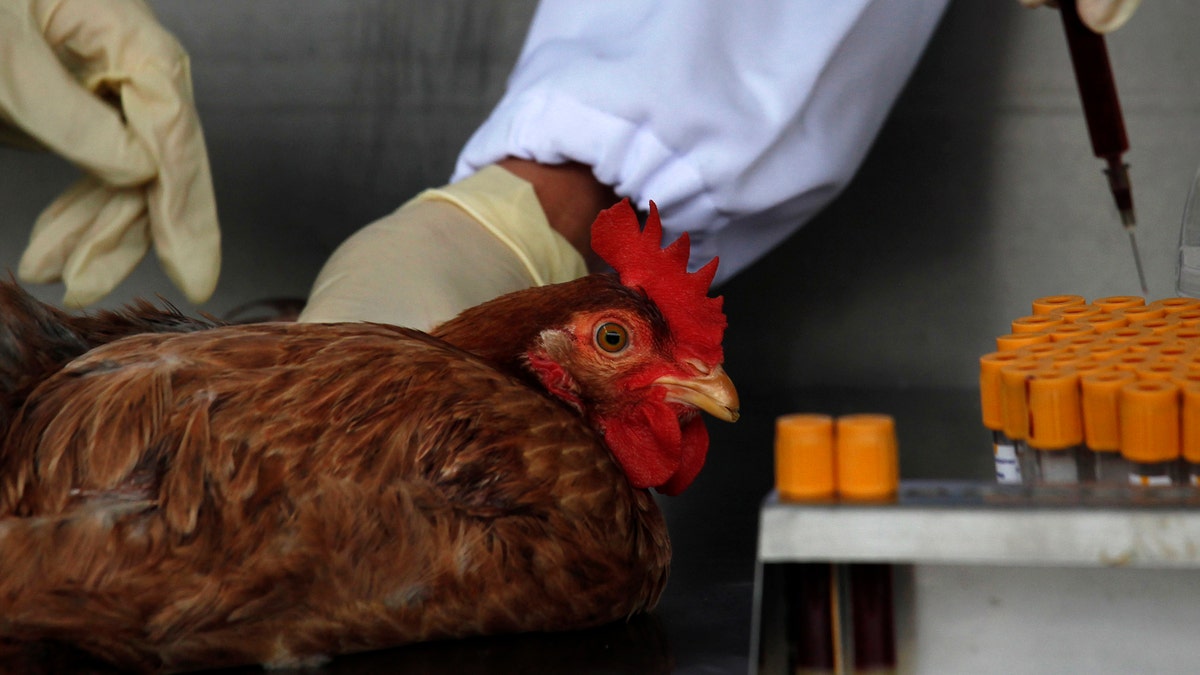
Officials from the Centre for Food Safety get a blood sample from a chicken imported from mainland China at a border checkpoint in Hong Kong. (REUTERS/Bobby Yip)
A controversial Dutch virologist has published research detailing how to make the H5N1 flu virus more contagious— a move he believes is beneficial to public safety, NPR reported.
Ron Fouchier and his team at Erasmus Medical Center in the Netherlands studied the H5N1 bird flu and revealed that only five mutations are needed to allow the virus to spread through the air between ferrets – the lab proxy for people.
So far, the virus has not been contagious in people, but is known to have infected 650 people globally— 386 of whom died.
In 2011, critics argued against publishing the team’s initial research showing how to make H5N1 more contagious, saying the scientists had created a dangerous new superflu that should not be openly published.
The team’s latest work, published in the journal Cell, has been screened through multiple layers of review to assess any danger it might pose to the public.
Fouchier believes his team’s findings are important for staying ahead of the virus and preparing for a possible pandemic.
"If we increase our understanding of how influenza viruses become airborne between mammals, we may be able to identify at some point which viruses [out of many that are circulating in nature], we need to keep an eye on because of public health risks," Foucher told NPR in an email.
Others argue publishing the recipe is dangerous, as others could potentially use it to weaponize the virus.
"I still don't understand why such a risky approach must be taken," microbiologist David Relman of Stanford University, told NPR. "I'm discouraged."
Relman, who served on a government advisory committee that considered whether the research should be openly published, questioned the likelihood that these studies would actually give advance warning of the next emerging flu pandemic — and that this advantage wouldn’t happen for some time.
"And we have, meanwhile, just bought ourselves even more risk," he said.
